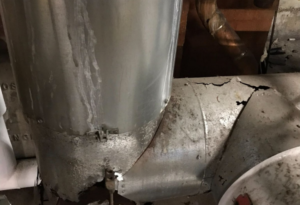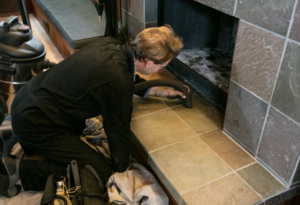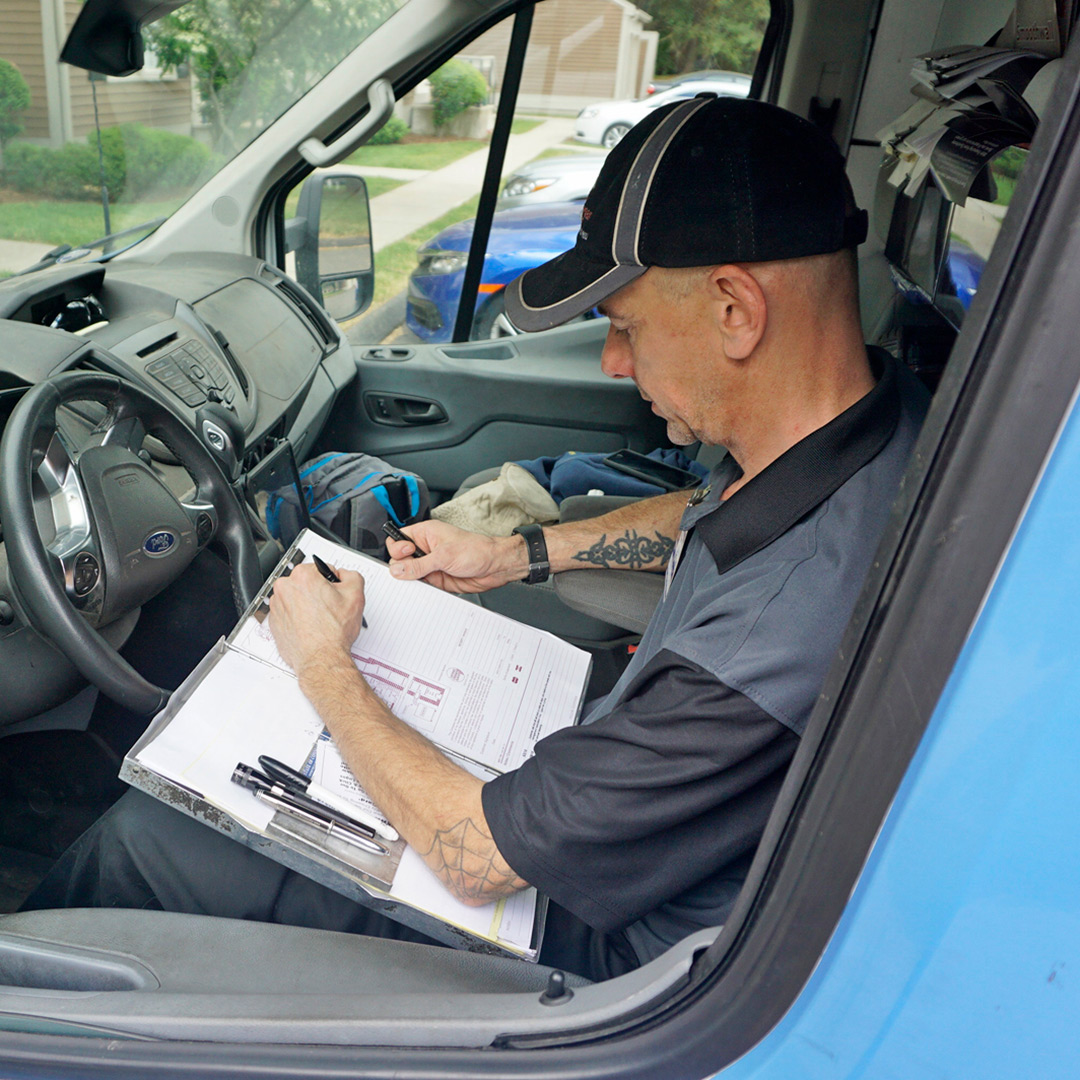Electric fireplaces blend the warmth and ambiance of traditional fireplaces with modern convenience and technology. Electric fireplaces offer a compelling alternative to wood-burning fireplaces, combining safety, ease of use, and environmental friendliness with the flick of a switch or the tap of a remote.
We created this article to guide you through the inner workings of electric fireplaces, from the innovative technologies that simulate the cozy glow of real flames to the efficient heating mechanisms that keep your space comfortable. We’ll explore the variety of styles available, how they’re installed and maintained, and the many benefits they bring to the table.
Whether you’re considering the addition of an electric fireplace to your home or simply curious about how they work, this comprehensive overview will illuminate the many reasons why electric fireplaces have become a favored choice among homeowners seeking both style and substance.
How Electric Fireplaces Generate Heat
Electric fireplaces have revolutionized the way we add warmth and ambiance to our homes, employing advanced technology to generate heat without the complexities and hazards associated with traditional fireplaces.
The magic behind the warmth of electric fireplaces lies in their use of electricity as a power source, transforming it into heat through a combination of ingenious methods that ensure efficiency, safety, and comfort.
The Principle of Convection
At the core of most electric fireplaces is the principle of convection, a method that circulates warm air throughout a room. This process begins with the fireplace drawing in cool air from the surrounding space. Inside the unit, this air passes over a heating element, typically made of metal coils, which heats the air as it is energized by electricity.
The heated air is then gently expelled back into the room, raising the temperature in a consistent and controlled manner. This cycle of drawing in cool air, heating it, and circulating the warm air back into the space ensures an even distribution of heat, making electric fireplaces an effective solution for warming your living environment.
Heating Elements and Infrared Technology
Electric fireplaces can utilize various types of heating elements to generate warmth. The most common include:
- Heating Coils: The classic method involves coils that become hot when electric current passes through them. A fan, often referred to as a blower, then pushes the warm air out into the room.
- Ceramic Plates: Another method involves ceramic plates, which heat up when electricity runs through them. These plates radiate heat into the room, warming up the air indirectly by heating objects in the space, which then release heat.
- Infrared Technology: Some electric fireplaces leverage infrared technology to directly warm objects and people in a room, rather than heating the air. This method mimics the natural warmth of sunlight and can heat a space more efficiently, making it ideal for larger areas or for providing supplemental heat where traditional heating methods fall short.
Efficiency and Effectiveness
Electric fireplaces stand out for their efficiency. Unlike traditional wood or gas fireplaces, which can lose a significant portion of their heat through chimneys or venting, electric fireplaces convert nearly all the electricity they use into heat.
This direct transfer of energy means that no heat is wasted, making electric fireplaces a cost-effective and environmentally friendly heating option. Additionally, the ability to control the intensity and output of the heat allows users to create a comfortable, cozy atmosphere tailored to their exact preferences.
The Ambiance of Heat Without the Hassle
One of the most appealing aspects of electric fireplaces is their ability to offer the comforting presence of a fireplace year-round, without the unwanted heat during warmer months.
Many models come with the option to display the flame effect independently of the heating element, allowing for the ambiance of a crackling fire without additional warmth. This feature transforms the electric fireplace from a mere heating appliance to an integral part of your home’s ambiance and decor, adaptable to all seasons.
Creating Realistic Flames Without Fire
The allure of electric fireplaces lies not only in their ability to heat a space efficiently but also in their mesmerizing recreation of the visual and auditory experience of a traditional fireplace, without actual combustion. This section delves into the innovative technologies that make this possible, detailing how electric fireplaces simulate the comforting ambiance of real flames.
LED Lighting: The Foundation of Flame Simulation
- Longevity and Efficiency: Utilizes energy-efficient LED lights designed to last tens of thousands of hours.
- Color Variety: Offers a range of flame colors, from classic orange to modern blues and greens, allowing customization to mood or decor.
Reflective Technology: Enhancing Depth and Movement
- Mirrors and Reflective Elements: Uses mirrors to reflect LED light patterns, creating a three-dimensional appearance of flickering flames.
- Dynamic Illusion: The combination of rotating mirrors and lights produces a lifelike effect of burning wood and embers.
Water Vapor and Ultrasonic Technology: Adding Smoke to the Flames
- Realistic Smoke Effect: Some models employ water vapor, illuminated by LED lights, to mimic the gentle, ever-changing movement of smoke.
- Safety and Convenience: Achieves the smoke effect without actual combustion, eliminating the risks and inconveniences associated with real smoke.
Sound Effects: The Crackling of a Real Fire
- Auditory Realism: Incorporates speakers to play recordings of crackling wood, enhancing the sensory experience of the fireplace.
- Customizable Soundscapes: Allows users to adjust the volume or select different soundtracks to match the visual flame effect.
Electric Fireplace Installation and Maintenance
Unlike their traditional wood-burning or gas counterparts, electric fireplaces free homeowners from the complexities of flue management, venting, and the exhaustive maintenance routines. This section outlines the streamlined process of installing and maintaining an electric fireplace, ensuring it remains a focal point of your home’s comfort and style for years to come.
Installation: A DIY-Friendly Process
Electric fireplaces stand out for their ease of installation, offering flexibility that traditional fireplaces can’t match. Here are the steps and considerations to ensure a smooth setup:
- Placement Flexibility: Most models simply require access to a standard electrical outlet, allowing them to be placed in a variety of locations throughout the home.
- No Venting Required: Because they don’t produce real flames or emit gases, there’s no need for a chimney or venting system, significantly reducing installation restrictions and costs.
- Types of Installations: Options range from wall-mounted units, which can be hung like a picture, to freestanding models that only require you to plug them in and switch them on. Inset models may require a bit more effort, fitting snugly into a wall or existing fireplace cavity.
Maintenance: Effortlessly Keeping the Glow Alive
The allure of electric fireplaces extends to their straightforward maintenance, ensuring lasting operation with minimal effort:
- Cleaning the Exterior: Regularly dusting the unit and wiping the exterior with a dry cloth will keep it looking new. For glass fronts, a gentle glass cleaner can remove fingerprints and smudges.
- LED Bulbs: One of the major advantages of electric fireplaces is the longevity of LED bulbs. Most will last for many years without needing replacement. However, if a bulb does go out, replacing it is usually a simple process.
- Inspecting Electrical Components: It’s a good practice to periodically check the cord and plug for any signs of wear or damage. If any issues are noticed, consulting with a professional is recommended to ensure safe operation.
- No Chimney Sweeping or Ash Cleanup: Unlike wood or gas fireplaces, electric units require no cleaning of ash, soot, or chimney sweeping. This absence of combustion byproducts not only makes maintenance easier but also contributes to a cleaner indoor environment.
Benefits and Versatility of Electric Fireplaces
Electric fireplaces have surged in popularity, not just for their aesthetic appeal but also for their multitude of benefits and versatility in application. These innovative home features offer advantages that traditional fireplaces can’t match, from environmental friendliness to ease of use, making them an attractive option for any homeowner.
Let’s delve into the myriad benefits that electric fireplaces provide and explore the versatility that makes them a fit for nearly any setting or lifestyle.
Benefits of Electric Fireplaces
- Eco-Friendly: Electric fireplaces emit no harmful pollutants or gases, making them a greener choice for your home. They utilize energy-efficient technology, ensuring that your environmental footprint is minimized while enjoying the warmth and ambiance of a fireplace.
- Safety: With no real flames, electric fireplaces eliminate the risk of fire hazards associated with traditional wood or gas fireplaces. They’re safe to touch, making them ideal for homes with children or pets, where the fireplace’s surface temperature remains low to prevent burns.
- Ease of Use: Turning on an electric fireplace is as simple as flipping a switch or pressing a button on a remote control. There’s no need to deal with firewood, kindling, or gas lines, offering unparalleled convenience and immediate warmth.
- Cost-Effective: Installing a traditional fireplace can be an expensive undertaking, requiring structural modifications and ongoing maintenance. Electric fireplaces, on the other hand, are significantly less expensive to purchase and operate, with minimal installation costs and no need for chimney cleaning.
- Year-Round Enjoyment: Even in warm weather, you can enjoy the ambiance of an electric fireplace without the heat. Most models allow you to turn off the heating element while still enjoying the realistic flame display, providing cozy vibes any time of year.
Versatility in Design and Placement
Electric fireplaces come in a variety of styles and designs, ensuring there’s a model to match any home decor or personal preference. From sleek, modern wall-mounted units to traditional mantel designs, the options are virtually limitless.
This versatility extends to placement, with electric fireplaces suitable for installation in living rooms, bedrooms, basements, and even outdoor spaces. Here’s how electric fireplaces adapt to different needs and settings:
- Customization: Many electric fireplaces offer customizable settings, including adjustable flame brightness, color, and even speed. This allows you to tailor the ambiance to your exact liking, whether you’re hosting a lively party or seeking a quiet evening of relaxation.
- Space-Saving Solutions: For smaller homes or apartments, wall-mounted or corner electric fireplaces can provide the warmth and charm of a traditional fireplace without taking up valuable floor space.
- Outdoor Living: Certain models are designed for outdoor use, allowing you to extend the comfort and style of your indoor living spaces to patios, decks, or gardens. These units are built to withstand the elements, offering a cozy gathering spot on cool evenings.
- Innovative Installation: Electric fireplaces can be installed in locations where traditional fireplaces might be impractical or impossible, such as below TVs, inside existing fireplace cavities, or even integrated into furniture pieces like bookshelves or entertainment centers.
FAQs About Electric Fireplaces
In the journey of embracing electric fireplaces in homes, several questions often emerge, reflecting curiosity and the desire for informed decision-making. This FAQ section aims to address the most common inquiries, providing clarity and enhancing understanding of electric fireplaces.
Are Electric Fireplaces Energy Efficient?
Yes, electric fireplaces are designed with energy efficiency in mind. They convert almost all the electricity they consume into heat, meaning very little is wasted. Unlike traditional fireplaces that can lose heat through the chimney, electric models keep the warmth inside your room. However, the actual efficiency can vary based on model and usage.
How Safe Are Electric Fireplaces?
Electric fireplaces are extremely safe compared to traditional wood or gas fireplaces. They don’t produce real flames, thus eliminating the risk of fire hazards associated with open flames. Furthermore, the surface of electric fireplaces stays cool to the touch, making them safe around children and pets. Always ensure your electric fireplace is installed according to the manufacturer’s instructions and that its electrical components are in good working order.
Can Electric Fireplaces Serve as a Primary Heat Source?
While electric fireplaces can provide additional warmth and comfort to a room, they are generally not designed to be the primary heat source for your home. They are best used as supplemental heat sources, perfect for warming up a specific room or space. For whole-house heating, it’s advisable to use them in conjunction with a central heating system.
Do Electric Fireplaces Require Venting?
No, electric fireplaces do not require venting. Since they do not burn fuel or produce real flames, there are no harmful emissions or smoke to worry about. This feature simplifies installation and placement within the home, as there is no need for a chimney or external venting.
Can I Install an Electric Fireplace Myself?
Many electric fireplaces are designed for easy installation, and you can indeed install them yourself. Wall-mounted and freestanding models can usually be set up without professional help. However, for built-in models or if you’re not comfortable with basic home improvement tasks, it might be wise to hire a professional to ensure the installation is done safely and correctly.
How Long Do Electric Fireplaces Last?
Electric fireplaces are known for their durability and can last many years with proper care and maintenance. The lifespan of an electric fireplace can vary depending on the brand, model, and usage, but with no actual combustion taking place, wear and tear are significantly reduced. LED lights, used in many models to create the flame effect, often last for tens of thousands of hours before needing replacement.
Can Electric Fireplaces be Used Without Heat?
Yes, one of the great features of electric fireplaces is the ability to use them with or without heat. This means you can enjoy the ambiance of the flames all year round, even during warmer months, without increasing the temperature of your room. This feature makes electric fireplaces a versatile decorative element in addition to their practical use as heaters.
Final Thoughts
The simplicity of installation, coupled with minimal maintenance requirements, positions electric fireplaces as a hassle-free addition to modern living spaces. Their eco-friendly and safety features further underscore their appeal in today’s environmentally conscious and safety-oriented society.
The versatility of electric fireplaces, with their array of designs and functional versatility, ensures that there is an option for every home, lifestyle, and preference. Whether it’s enhancing the ambiance of a room without raising the temperature or providing a cozy warmth on a chilly evening, electric fireplaces adapt to your needs year-round.
The ability to customize flame effects and utilize them independently of the heat feature allows homeowners to enjoy the comforting glow of a fireplace even in warmer months, making electric fireplaces a versatile choice for all seasons.





 Understanding Fraudulent Companies
Understanding Fraudulent Companies
 Parts of a Pellet Stove
Parts of a Pellet Stove Northeastern Chimney, Inc. Established in 1984 is a fully licensed and insured chimney repair company. We provide chimney sweeping &
Northeastern Chimney, Inc. Established in 1984 is a fully licensed and insured chimney repair company. We provide chimney sweeping &